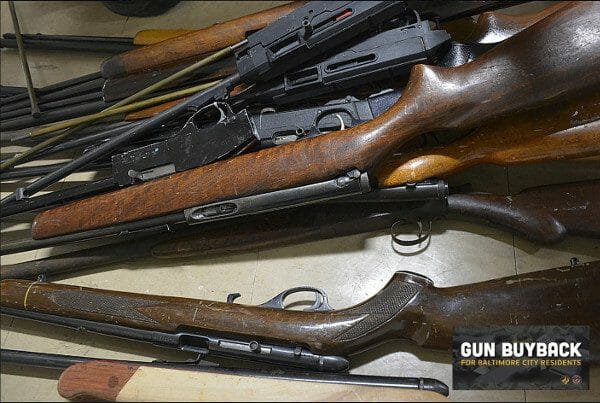
U.S.A. -(Ammoland.com)- The city of Baltimore spent a reported $250,000 dollars to purchase over 500 unwanted guns in a “buyback” program.
“Buyback” is an Orwellian propaganda term. You cannot buy back things you never owned in the first place.
The Baltimore program was “successful” in that it collected over 500 firearms to be destroyed. It “worked” for two basic reasons.
First, it offered more money than most of the guns were worth on the open market.
Second, the state of Maryland has made it difficult to buy and sell guns legally and privately. There was little competition for the few guns brought in that were worth more than the government was offering. The inconvenience factor of finding a legal buyer, gave incentive to people who wanted to dispose of a gun.
Most of the guns turned in are those seldom used in crime. Paying $200 for semi-automatic .22 rifles that cost $99 and less when new (and are still widely available for less than $150) is stupid and counterproductive.
One gun collector in a wheelchair brought in a rusty old bolt shotgun barreled action. It might be worth $10 at a gun show. He got $100.
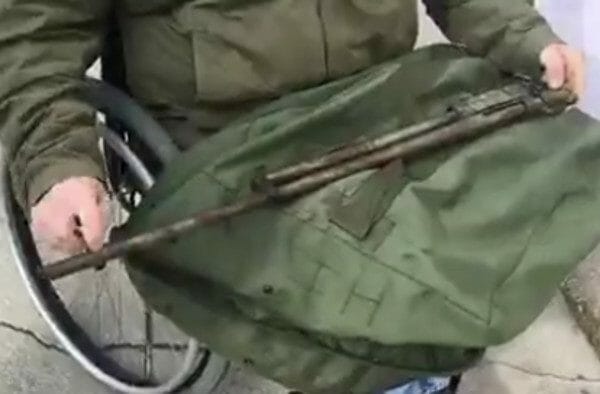
People were paid $100 for revolvers that were turned in. Most of those pictured were worth $50 or less on the market. Several were inexpensive models that cost less than $30 when new.
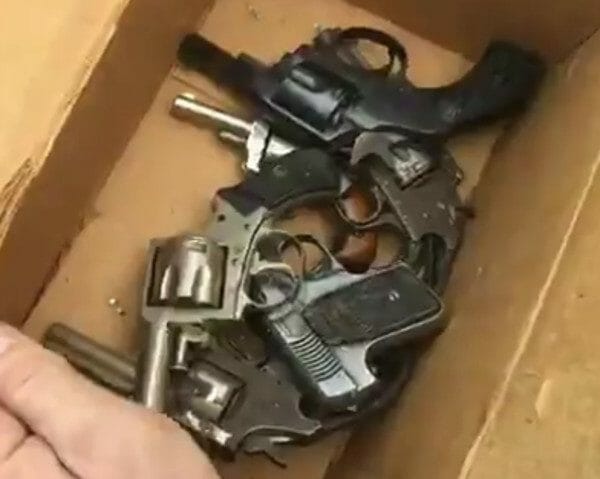
One 80-year-old woman brought in a revolver worth maybe $30. She will get $100 for it. Many of the people bringing in guns were older women who did not want to deal with the firearms. It is a common story. The husband dies, and the widow gets rid of the guns. Sometimes collections worth tens of thousands of dollars are given to police, simply to get rid of them.
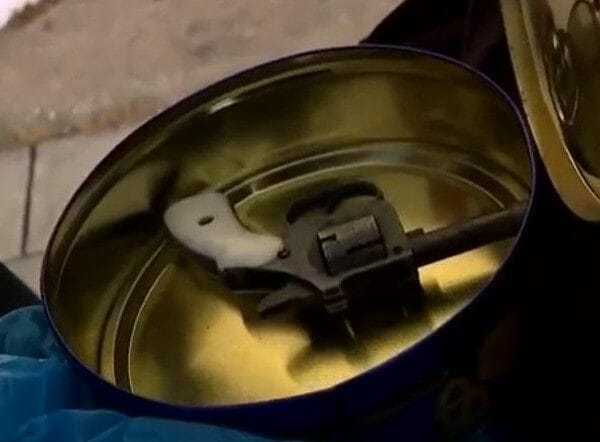
Most of the guns were inexpensive older .22 rifles and inexpensive old shotguns. Many of them seem of doubtful utility or reliability. The were likely hunting guns that belonged to the grandparents of the current Baltimore residents.
What does the City of Baltimore get for its quarter million dollar investment?
Camera time on the news, and virtue signaling that “guns are bad”.
One woman was frank about her motivation in turning in her inexpensive 9mm. The woman is going to use the $200 to purchase a bigger, better gun.
Numerous academics have pointed out how ineffective these programs are. From Freakonomics:
When it comes to gun buybacks, both the theory and the data could not be clearer in showing that they don’t work. The only guns that get turned in are ones that people put little value on anyway. There is no impact on crime. On the positive side, the “cash for clunkers” program is more attractive than the gun buyback program because, as long as they are being driven, old cars pollute, whereas old guns just sit there.
It seems unlikely the propaganda from the program will be effective.
How will future historians treat such programs. Will they see them as sacrificial rituals to the god of “Whirled Peas” ?
Some say it is better for politicians who want the population disarmed, to spend this money on foolish programs, than to be used on enforcement of gun bans.
It probably does not matter. To the politicians, it is other people’s money, and they do not see it as running out.
About Dean Weingarten: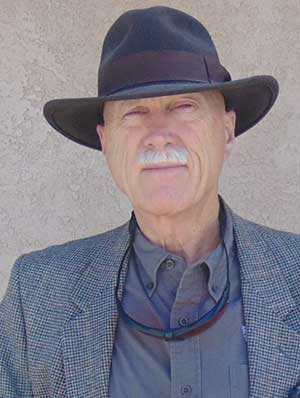
Dean Weingarten has been a peace officer, a military officer, was on the University of Wisconsin Pistol Team for four years, and was first certified to teach firearms safety in 1973. He taught the Arizona concealed carry course for fifteen years until the goal of constitutional carry was attained. He has degrees in meteorology and mining engineering, and recently retired from the Department of Defense after a 30 year career in Army Research, Development, Testing, and Evaluation.
